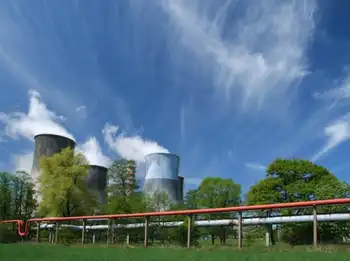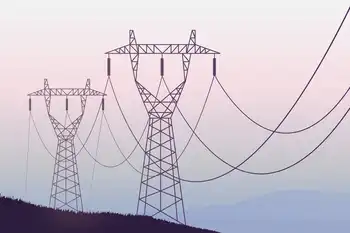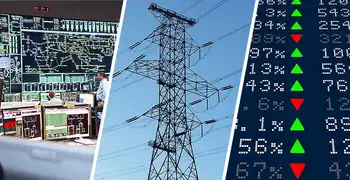America's dirtiest power plants
A searchable database ranking 378 U.S. power plants on carbon dioxide, sulfur dioxide (SO2), nitrogen oxide (NOx) and mercury pollution is now available online at http://www.dirtykilowatts.org.
The 12 states with the heaviest concentrations of the dirtiest power plants - in terms of total tons of carbon dioxide emitted - are: Texas (five, including two of the top 10 dirtiest plants); Pennsylvania (four); Indiana (four, including two of the top 10 dirtiest plants); Alabama (three); Georgia (three, including two of the top three dirtiest plants); North Carolina (three); Ohio (three); West Virginia (three); Wyoming (two); Florida (two); Kentucky (two); and New Mexico (two).
The "Dirty Kilowatts" report also ranks the worst power plants on the basis of sulfur dioxide, nitrogen oxide and mercury, looking at all four pollutants both in terms of total tons of emissions and also emission rate (pounds per megawatt-hour of electricity produced). For example, just 14 percent of the 378 ranked fossil-fuel-burning power plants account for 40 percent of their sulfur dioxide emissions.
Taken together, the 378 plants ranked in this report represent about a third of all power plants tracked in EPAÂ’s inventory, but they account for almost 90 percent of the electricity generated by the plants in EPAÂ’s inventory, and approximately half of total U.S. electric generation. Plants in North Dakota, Ohio, Pennsylvania, Texas, Indiana, and South Dakota top the non-CO2 rankings.
The EIP report notes: “Nationwide, the power plants that provide electricity to run our homes, businesses, and factories also account for 40 percent of carbon dioxide, roughly two thirds of sulfur dioxide, 22 percent of nitrogen oxides, and roughly a third of all mercury emissions (in the U.S.) … Power plants are major contributors to global warming, emitting billions of tons of carbon dioxide (CO2) each year. In addition, power plants emit millions of tons of sulfur dioxide (SO2) and nitrogen oxides (NOx), pollutants that trigger asthma attacks and contribute to lung and heart disease, and cause smog and haze in cities and national parks. And, power plants emit dangerous toxins like mercury, a neurotoxin especially harmful to children and developing fetuses.”
Ilan Levin, counsel, Environmental Integrity Project, said: “While Congress is poised to seriously consider legislation to limit the greenhouse gases that made 2006 the hottest year on record, the electric power industry is racing to build a new fleet of coal-fired power plants that rely on conventional combustion technologies that would only accelerate global warming. Once utility companies secure their air pollution permits, we can expect them to argue that these new plants should be ‘grandfathered,’ or exempt from any pending limits on greenhouse gases. We’ve been through this before.
“When the original Clean Air Act was passed in 1970, the electric utility industry persuaded Congress to not impose strict pollution controls on old power plants, because they would soon be replaced by newer state-of-the-art facilities. Yet despite the industry’s promises, many of the nation’s oldest and dirtiest power plants continue to operate today. Americans pay the bill for that delay when they suffer the ill health consequences of breathing needlessly dirty air.”
Mary Ann Hitt, executive director of the regional nonprofit organization Appalachian Voices in Asheville, N.C., said: “On the ground in Appalachia, we see the impact of these dirty coal plants every day and in every part of our lives. We are losing homes and communities to mountaintop removal mining, and losing the lives of loved ones to health problems triggered by air pollution.”
Jan Jarrett, vice president, Citizens for Pennsylvania's Future (PennFuture), Harrisburg, PA, said: “This report shows, most of all, that the importance of strong environmental laws cannot be overstated. Reductions in sulfur dioxide and nitrogen pollution from power plants are a direct result of a strong federal Clean Air Act, but it took more than 30 years. That’s one of the reasons we fought so hard for the Pennsylvania mercury rule, which will cut mercury pollution by 90 percent by 2015. We knew the federal government wasn’t about to take action, so the state of Pennsylvania had to. Now it’s time to demand cuts in carbon dioxide pollution to fight global warming.”
Valerie True, spokesperson, Southern Alliance for Clean Energy, with offices in Georgia, Tennessee and North Carolina, said: “This report not only highlights the threats from old power plants, but the future risk should utility customers be forced to pay for the expansion of this dirty form of energy. Proposals for new coal-fired power plants are popping up across the nation. Given the imminent risks of global warming, the nation needs to take immediate action to clean up these old power plants and stop the construction of new coal-fired plants.”
Dean Hulse, member, Clean Electricity Committee of the Dakota Resource Council, Dickinson, N.D., said: “This report is the ‘canary in the coal mine’— it points out serious problems that require immediate attention. The global warming debate is over. We are heating up the earth, and the burning of coal is one of the biggest contributors of global warming pollution.
“Beyond the burning of coal is the issue of coal mining. Although not discussed in this report, the mining of coal damages land and water and moves farmers and ranchers off the land. In North Dakota, keeping the coal dinosaur alive hinders the economic development of renewable energy, including wind energy, in which North Dakota leads the nation.”
The new EIP report highlights ways to reduce CO2 emissions from power plants. First, the time has come to phase out and permanently retire the nationÂ’s oldest and least efficient plants, and reduce our dependence on coal. Reducing electricity demand, through smarter building codes, and low-cost conservation efforts such as weatherization of homes and installation of more efficient home and business appliances, will lead to CO2 reductions.
Investments in renewable energy sources, such as solar and wind power, should be encouraged, and investments in fossil fuel-based electric generation should be a last resort.
And, if new coal plants are to be built, then they must be designed to drastically reduce CO2 emissions. Carbon capture and sequestration have promise, and currently available and economically viable technologies – for example, “ultra-supercritical” designs for steam boilers, gas turbines (instead of steam), blending cleaner fuels with coal, such as natural gas and biomass – can almost double fossil-fuel-fired plants’ thermal efficiency, up to 60 percent, thus lowering CO2 emissions.
One bright spot in the EIP report: 37 years after the Clean Air Act, power plants are finally starting to clean up their sulfur dioxide emissions, thanks to a combination of factors including enforcement actions, tough state laws, and reductions anticipated from EPAÂ’s Clean Air Interstate Rule (CAIR). The scrubbers that power companies are beginning to install will reduce sulfur dioxide emissions by as much as 90 percent as some of the dirtiest plants. However, while CAIR establishes a two-phase cap for S02, ending at 2.5 million tons in Eastern states in 2015, due to early reductions and banking of credits for use later, the cap is unlikely to be met until well beyond 2015.
Related News

Utility giant Electricite de France acquired 50pc stake in Irish offshore wind farm
PARIS - It’s been previously estimated that the entire Codling Bank project, which will eventually see hundreds of wind turbines erected about 13km off the Co Wicklow coast, could be worth as much as €100m. The site is set to generate up to 1.1 gigawatts of electricity when it’s eventually operational.
It’s likely to cost well over €2bn to develop.
The other half of the project is owned by Norway’s Fred Olsen Renewables, with tens of millions of euro already reportedly spent on surveys and other works associated with the scheme. Initial development work started in 2003.
Mr Barrett will…





